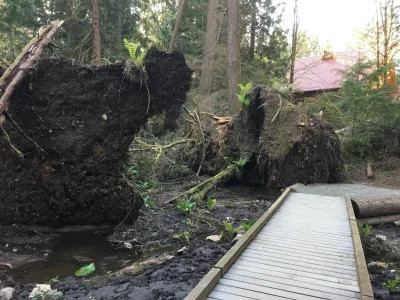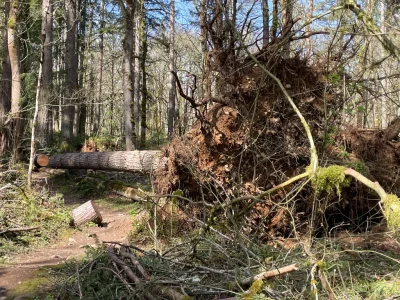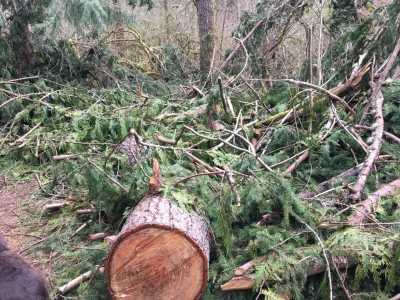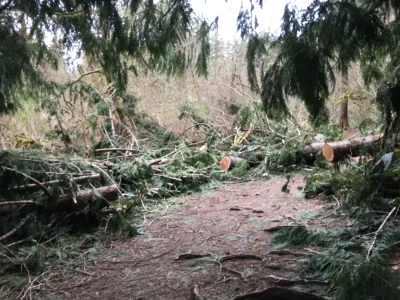- Joined
- Jan 6, 2020
- Messages
- 3,547
- Reaction score
- 57,843
In western Washington, we suffered an "atmospheric cyclone" or "cyclone bomb" in mid-November. I was out of the area so was fortunate to miss it (and the 5-day power outage that followed it), but returned to the area in April. My daughter and I regularly hike some nearby wooded parks and preserves and we were shocked to see the damage that had occurred. Many fallen trees, trees broken off midway up the trunk, fallen branches, and some older large trees completely uprooted, with the rootball tipped on its side and the trunk extended out along the ground from there. I have to imagine that a hurricane produces similar conditions.The search and rescue teams would continue searching as long as there was a chance that the children were alive. When there was no further chance of finding living children, then the SAR teams' work is done. After that, recovery teams may be sent in. The teams are trained for different work.
When you consider how the SAR teams worked day and night and still covered a relatively small area, it makes you realise how difficult the terrain was. Had they been searching in a thinner forest, or open fields they could have covered a much larger area in the same time. But Hurricane Fiona created havoc in the forest in Pictou County where these kids went missing. The forest is a jumble of uprooted, fallen trees and broken branches. The search conditions were very challenging.

Post-tropical storm Fiona decimated Nova Scotia’s woodlots. These ecological foresters tell us what cleanup should look like. - Halifax Examiner
Unlike most other Canadian provinces where the Crown owns most of the land, in Nova Scotia just 29% is designated Crown land. Much of that private land is in the hands of 30,000 private woodlot owners. Since post-tropical storm Fiona, the provincial government has allocated millions of dollars...www.halifaxexaminer.ca
I cannot imagine trying to conduct a thorough search through such an area. I cannot even imagine how wildlife common to the area is getting around... it must be slow-going.
Some pics of what we saw (in western WA, NOT in Nova Scotia... but I imagine somewhat similar conditions). The cuts are where trees fallen over hiking trails were cut to clear the path through for hikers/mountain bikers:





